Birds
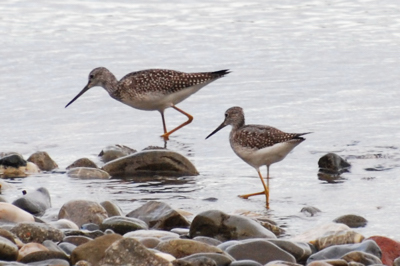
Greater Yellowlegs, Blow Me Down Provincial Park, September 2008.
Newfoundland is truly a bird watchers paradise. More than 360 species of birds have been spotted here, ranging from resident birds, which stay year-round, to migratory breeders to visiting species and the unusual rarities that drop by en route to other destinations.
With 35 million seabirds visiting Newfoundland every summer, Newfoundland is often referred to as the ‘Seabird capital of North America’.
Among the most frequent species are petrels, kittiwakes, murres, razorbills, Northern gannets and puffins.
There are dozens of large seabird colonies on Newfoundland.
Great Island, one of the four islands of the Witless Bay Ecological Reserve, is home to the largest breeding colony of Atlantic Puffins in eastern North America.
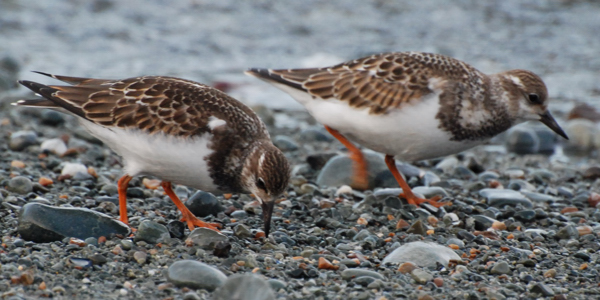
Turnstones at Sleepy Cove, Twillingate, August 2008.
For those who love to observe gannets, Cape St Mary's Ecological Reserve is an absolute must-see. Cape St. Mary's is a seabird sanctuary with the largest nesting colony of gannets in Newfoundland and the third largest in North America. From the Interpretation Centre it is a 15 to 20 minutes walk to the vantage point which overlooks Bird Rock. It's very imposing to observe these beautiful golden-headed birds with the two-metre wing span from only 15 metres away.
Besides seabirds, Newfoundland is also home to a great number of coastal birds and waders.
A common wader in Newfoundland is the Greater Yellowlegs. But also a lot of sand pipers and sanderlings can regularly be seen, looking for their food in th tide-line along the coast.
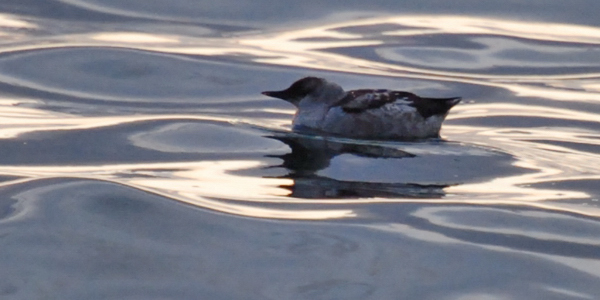
Scoter, Blow Me Down Provincial Park, September 2008.
The common loon is not only worth to be seen, but because of its distinguishing call also worth to be heard. Especially in the twilight and at night this tremolous 'ha-oo-oo' sounds very mysterious.
By the way, the loon als appears on the reverse of Canada's one-dollar coin, which is therefore commonly called a 'loonie'.
Two birds of prey, often included among lists of seabirds, are the osprey and the bald eagle.
The forested regions on Newfoundland are home to a great number of smaller bird species, like woodpeckers, blackbirds, sparrows, tits, finches and warblers.
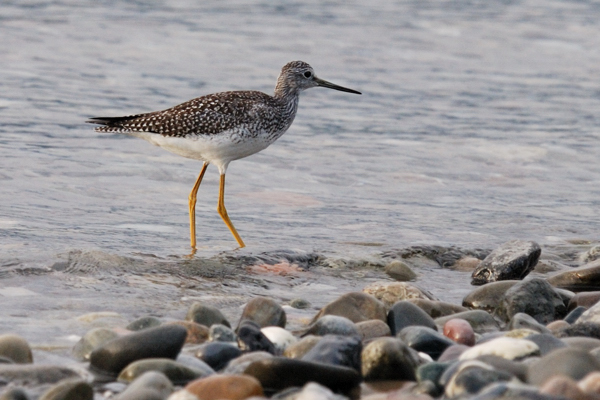
Greater Yellowleg, Blow Me Down Provincial Park, September 2008.
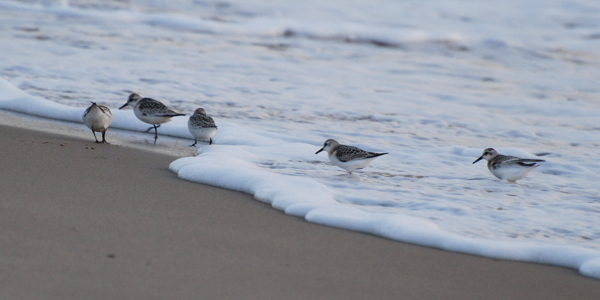
Sanderlings, Sandbanks Provincial Park, Burgeo, September 2008.
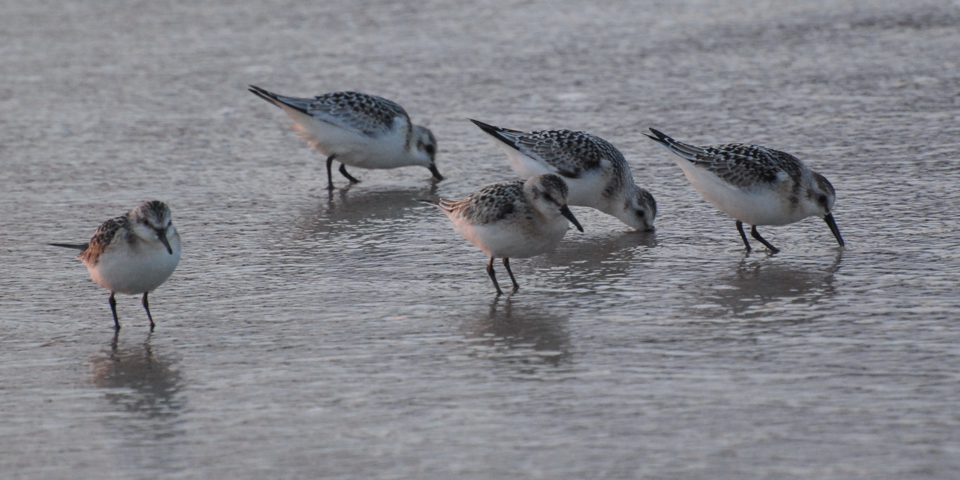
Sanderlings, Sandbanks Provincial Park, Burgeo, September 2008.
